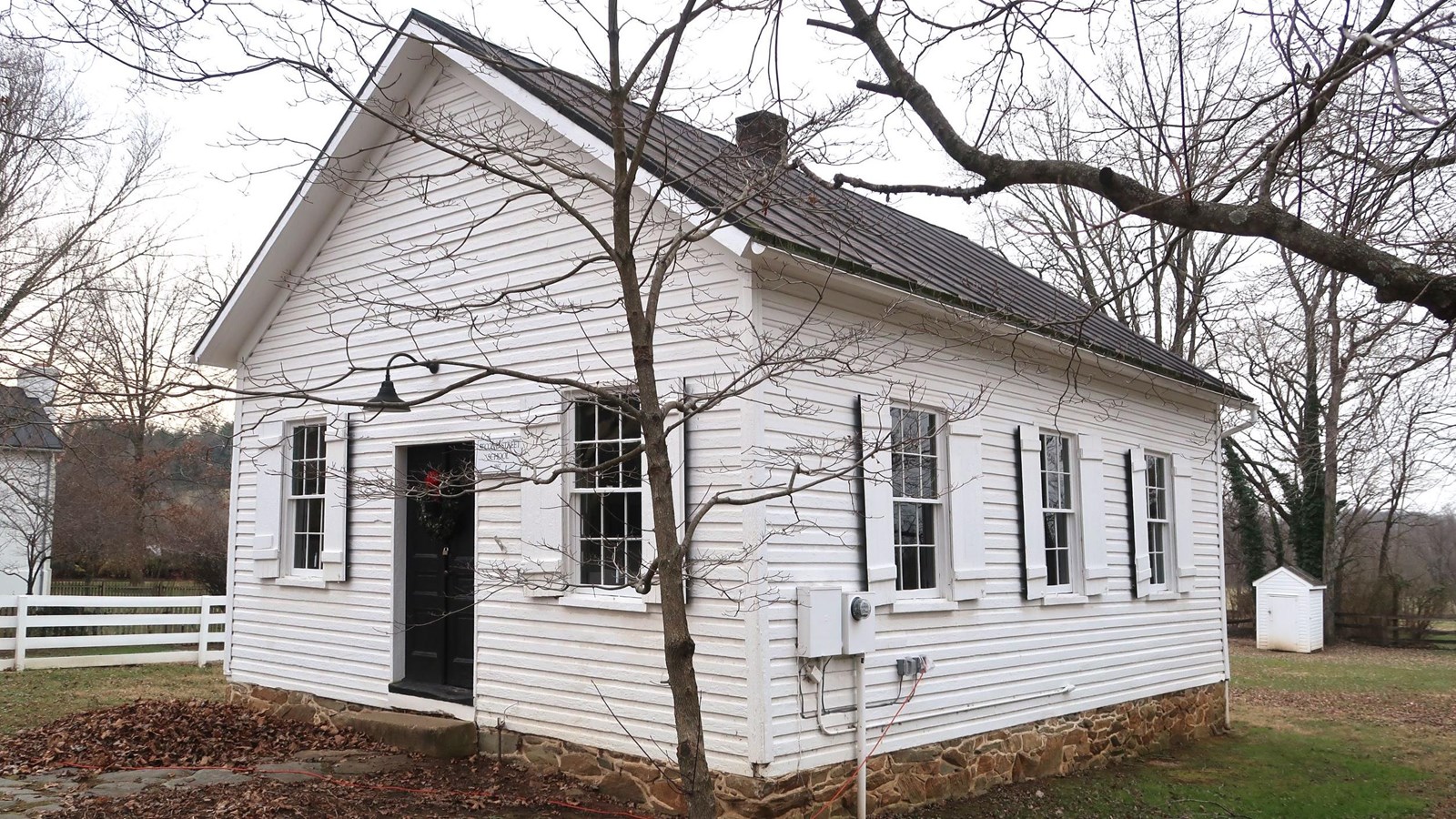Last updated: September 27, 2024
Place
Second Street School in Waterford, Virginia

NPS Photo/Center for Historic Architecture and Design Staff, December 2019
The Second Street School, also known as "Colored School A,” is located at the northwest corner of the intersection of Second Street and Janey Street in the village of Waterford, Virginia. The Second Street School was constructed in 1867 to serve the town’s African American children, making it among the oldest one-room school buildings in Loudoun County, and a highly intact example of this important building type. It initially operated under the Freedman’s Bureau. The building also functioned as a church until the African American community built the John Wesley Community Church in 1891. African American children attended school in the building until it was closed during school consolidation in 1957. The Waterford Foundation bought the school in 1977. It currently uses the building for a living-history program that educates students about the opportunities and limitations faced by African American children attending a one-room, segregated school during the 1880s.
This small school and church building in Waterford’s Historic District powerfully illustrates the importance of churches, schools, and even cemeteries to African Americans in the Southern and border states during the transition from a slave society to a free society after the Civil War. For African Americans who endured and resisted whites’ attempts to control their religious lives during slavery, churches such as Wesley Community Church embodied freedom and independence. Preachers and lay leaders were often leaders in the community as well. Though excluded from positions of formal leadership, women in the churches organized fundraisers and other events. Because African Americans owned and controlled their churches, they also used the buildings for activities that whites opposed, such as schools and political meetings. During the Reconstruction Era, African Americans in the former slave-holding states saw education as an important step towards achieving equality, independence, and prosperity. As a result, they found ways to learn despite the many obstacles that poverty and white people placed in their path. African Americans’ commitment to education had lasting effects on the former slave-holding states. As voters and legislators, they played crucial roles in creating public schools for blacks and whites in the Southern and border states in the late 1800s. Click here to learn more about African American education during Reconstruction.
The Second Street School is a one-story, three-bay, frame school building. The school has a continuous coursed rubble stone foundation. The walls are clad in wood drop siding. The front-gable roof is clad in standing seam metal and has wide, plain eaves. An interior brick chimney is located at the center of the building. The school has symmetrical fenestration. The center pair of three-paneled wood doors with plain wood surrounds is flanked by two windows. There is a single concrete step up to the door. The windows are six-over-six light, wood, double-hung, sliding sash with plain wood surrounds. They have functional board-and-batten wood shutters.
The Second Street School is a contributing resource within the National Historic Landmark Waterford Historic District. National Historic Landmark Nomination
National Historic Landmarks (NHLs) are historic places that possess exceptional value in commemorating or illustrating the history of the United States. The National Park Service’s National Historic Landmarks Program oversees the designation of such sites. There are over 2,600 National Historic Landmarks. All NHLs are also listed in the National Register of Historic Places.
